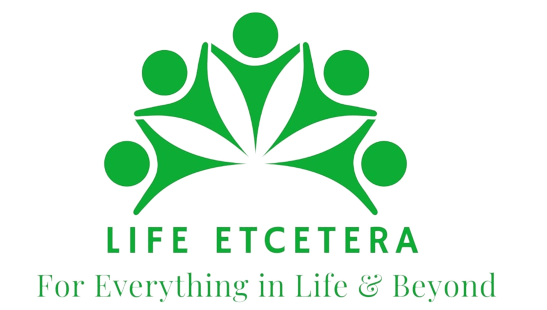We all know that by practicing Yoga we can get relief from various kinds of mental and physical haziness. From the ancient times, people are highly benefited from Yogic science and meditations. It is an applied process for making one’s life firm, beneficial and decent. The origins of methodical yogic concepts were found in Vedic scriptures and in other rules and regulations which are discussed in various sacred texts. The word yoga is stated in the oldest sacred texts, in the Rigveda, Atharvaveda and in the Brāhmaṇa literature etc. Progressively, the indications of yoga are found in other Indian literature as well, such as- the Rāmāyaṇa, the Bhagavatgita, the Mahābhārata, Purāṇas, Āyurveda etc.
The Vedas
Ṛgveda
The Vedas are considered as the most sacred and precious texts of India. The word yoga is also used in the Ṛgveda in the connection of the hymns with some sacrificial ritual. The term yoga is frequently used to mean uniting, connecting in the pages of the Ṛgveda (Ṛgveda– 2.39.4, 3.53.17, 1.115.2, 8.80.7, 10.60.8, 10.101.3 etc.) The Ṛgveda lays stress on the linking of the mind and controlling of the stress (yuñjate mana uta yunjate dhiyo viprā viprasya bṛhato vipaschitaḥ/ vi hotrā dadhe vayunāvideka inmahī devasyan savituḥ pariṣṭutiḥ/5,81.1). Controlling the mind and thereby restrictive the senses is the best path to having a spiritual high. It should be mentioned that yoga in some of the hymns of the Ṛgveda means the spiritual linking, the coordinating of the divine thoughts with the start of the spiritual journey (Ṛgveda, 10.114.9). The word yoga seems to be used to imply relation also. The word is used to conclude the relation of hymns with the rituals of yajna (Sacrifice). (Ṛgveda, 1.18.8, 1.18.13). In the Ṛgveda, tapas are also called yuj (Ṛgveda, 10.33.3). Although the word yoga and the root yuj is generally used to denote any means to achieve any goal, three means viz. body, mind and speech are most important as far as the further development of yogais concerned. However, it must be noted that the end to be achieved by these means, viz. complete serenity of mind is nowhere clearly mentioned in the Ṛgveda. Several seeds of yogic concepts can be found in the Ṛgveda itself. Patañjali’s Aṣṭāṅgayoga (the eight limbs of yoga) which includes- Yama, Niyama, Ᾱsana, Prānāyāma, Pratyāhāra, Dhāranā, Dhyāna, and Samādhi. provide the path and technique to attain “Kaivalya” (a state where man attains freedom from all misery). Here, yama and niyama, can be traced in the Ṛgveda. Even Ahiṁsā (non-violence) is mentioned as a virtue of God Mitra (5.64.3). The steya (theft) and the stena (thieves) have been often condemned in the Ṛgveda (7.104.10). Dhāraṇā (attention) consists in fixing the mind in a particular region and likewise, the Vedic poets were certainly trying to fix their minds on the deities while seeking their favours. Thus, the idea of yogic concepts was also current in some way in the age of the Ṛgveda (Ṛgveda, 10.43.2).
Atharvaveda
Like Ṛgveda, in various chapters of the Atharvaveda also display the application of the word yoga. Actually, these are just reproductions from the Ṛgveda (Atharvaveda, 20. 27.1; 20.69.1 etc.). In some places, the word yoga occurs in multiple ways such as Brahmayoga, Kṣtrayoga etc. (Atharvaveda, 10.5.1-5). At one place of the Atharvaveda the word yoga is used as aṣṭayoga and ṣaḍayoga (imaṁ yavamaṣṭā yogaiḥ ṣaḍayogebhircarakaṣuḥ, 6.91.1). In this Veda, yoga is used to imply the attainment of unattainable relations as well (19.8.2; 20.69.1). The concepts of prāṇa as the dynamic life principle can also be traced to a hymn in the Atharvaveda (9.1.4). In a verse of this particular Veda, the human body is designated as an unbeatable fortress of gods having eight chakras and nine gates ((10.2 31).
The concepts of ahiṁsā (non-violence), satya (truth) and asteya (abstention from stealing) can be found in the Atharvaveda. Ahiṁsā has been recommended in connection with the Brāmin and cows. Similarly, the theft of a Brāmin has been especially condemned. The importance of satya has been stressed in several places. God Varuṇa has been described as the protector of truth and punisher of falsehood. Other gods like Agni and Indra also are supposed to act in the same manner. Amongst the niyamas, tapas, svādhyāya and iśvarapraṇidhāna can be traced to the Atharvaveda. In this Veda, much importance is given to Brahmacharya (celibacy) (11.5.1). The concept of prāṇa and aprāṇa were evolving in the days of Atharvaveda, but prāṇāyāmahas not been clearly mentioned in the Atharvaveda and the yogāṅgas were also still in the state of growth. Thus, although it is not proper to read the complete system of yogas, in the age of the Atharvaveda, yet, the different means employed for self–advancement in those days have certainly contributed to the development of yoga.
Yoga in Scriptures
The word yoga is used in Brāhmaṇa literature to suggest mostly in the sense of leading, ruling, linking etc. The Śatapatha Brāhmaṇa (one of the important Brāhmaṇa literature) states that control of speech is a duty of a Yogī (3.2.2.26). The importance of linking the mind has been significantly stated in this Brāhmaṇa literature. The Śatapatha Brāhmaṇa states that nothing can be done properly without linking the mind (3.2.2.19). It has been also specified in this Brāhmaṇa that the success of every action is subject to on application of the mind which is said to be the vibhūti of the mind.
In the Aitareya Brāhmaṇa, (another important Brāhmaṇa literature) states the importance of mental japa and observing silence is also explained (9.7). The Kauṣītaki Brāhmaṇa explains the significance of observing fast (4.11 In the age of the Brāhmaṇa literature, the syllable Om was already recognized as an important object of meditation. Thus, it is found that during the days of Ṛgveda and Brāhmaṇa literature, people were much aware of the benefits of yoga and pranayams to make them physically and mentally fit. If we fit in both ways, then we can contribute to the development of our society.
Author:
Dr Indrani Deka
Assistant Professor in Sanskrit, KKHSOU
8472079981(M)



